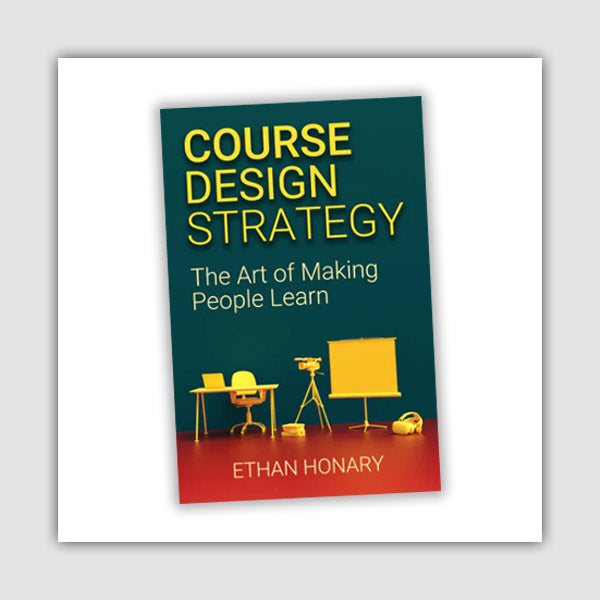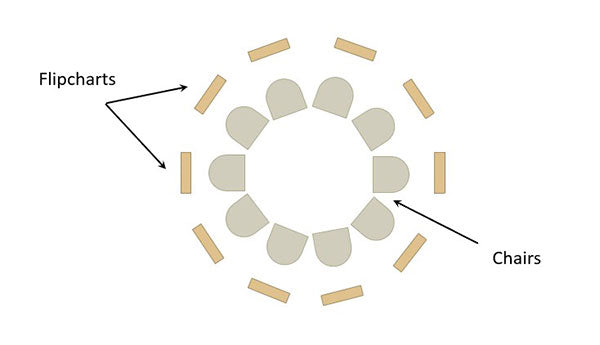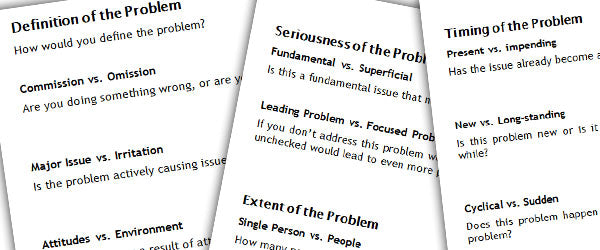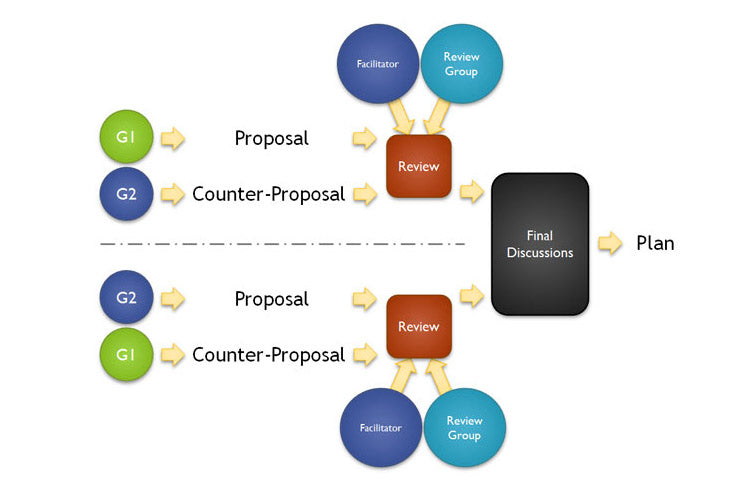Purpose
In today’s world, being creative is quite critical. Creative staff can solve problems quickly and come up with more imaginative ideas. Practicing a systematic approach to creativity is quite useful in many training courses and you can use this exercises as a creativity enhancer.
Objective
The delegates must suggest lots of associations between a selected topic and a random word.
What You Need
- Flipchart or white board and pen to write on
- A magazine, newsletter, newspaper or something similar with content on it.
Setup
- Explain that being creative is all about thinking out of the box. For example, imagine if you give your kid a shoebox. What will happen next? The last thing you expect is that they put their shoes in it! Instead they will use it as a tower, convert it to a printer, use it as a ramp for their little toy cars to collide with something else at the bottom and so on.
- Encourage the delegates to come up with more suggestion so they get the idea.
- Conclude that the original use is not critical and thinking horizontally and vertically can create lots of new ideas.
- It’s all about play. Kids are creative because they are playing. Play and creativity are almost synonym. If you want to be creative, you need to play.
- Now move on to the main activity. Ask the delegates to suggest an objective within the context of their work. They will shortly use this objective to brainstorm and come up with lots of new solutions. Write this objective on the centre of the flipchart. For example, the objective can be “Increase sales by 20%”, “Increase productivity so we can have one day off every week to spend on pet projects”.
- Give the magazine to a volunteer and ask her to put her finger on a random word. Use the closest non-article word to the position. Write this word on top of the flipchart.
- Now the group must find as many associations as possible between this keyword and the objective they identified earlier. For example, suppose the objective was “Increase productivity so we can have one day off every week to spend on pet projects” and they selected a random word, “spend”. Here is how the association making may look like:
- Spending, using money for value. Anyone working on a project with the least amount of expenses gets ‘pet project day’. Or every project manger must spend 3 hours time with other managers per week. Or get customers to spend a bit more. That means we increase the prices by 5% and use that 5% for ‘per project day’ for everyone...
- If the group couldn’t come up with any idea after one or two minutes, then choose another keyword at random and repeat the process until there are enough ideas created.
Timing
Explaining the Test: 10 minutes.
Activity: 15 minutes
Group Feedback: 10 minutes.
Discussion
Ask the delegates how they felt about this process. Where they more creative? Get them to notice that a simple random word can create so many associations especially when a group is brainstorming over it. People can get excited and will come up with lots of outrageous ideas.
Explain that each association is quite valuable even if it is not directly applicable or meaningful. Some associations are useless themselves but they open up the door to a whole new set of concepts that will be extremely useful, or in other words genius. As a result, make sure delegates throw in seemingly bad ideas without hesitation. To encourage this, do it yourself; “Guys here is another bad idea, let’s see if it works”. You want to make sure that the delegates will learn not to filter themselves as they go through the process.
Soft Skills Training Materials
Get downloadable training materials
Online Train the Trainer Course:
Core Skills
Learn How to Become the Best Trainer in Your Field
All Tags
Training Resources for You

Course Design Strategy
Available as paperback and ebook

Free Training Resources
Download a free comprehensive training package including training guidelines, soft skills training activities, assessment forms and useful training resources that you can use to enhance your courses.

Our Comprehensive Guide to Body Language

Train the Trainer Resources
Get Insights - Read Guides and Books - Attend Courses
Training Materials
Get downloadable training materials on: Management Training, Personal Development, Interpersonal Development, Human Resources, and Sales & Marketing














Leave a comment
All comments are moderated before being published.
This site is protected by reCAPTCHA and the Google Privacy Policy and Terms of Service apply.